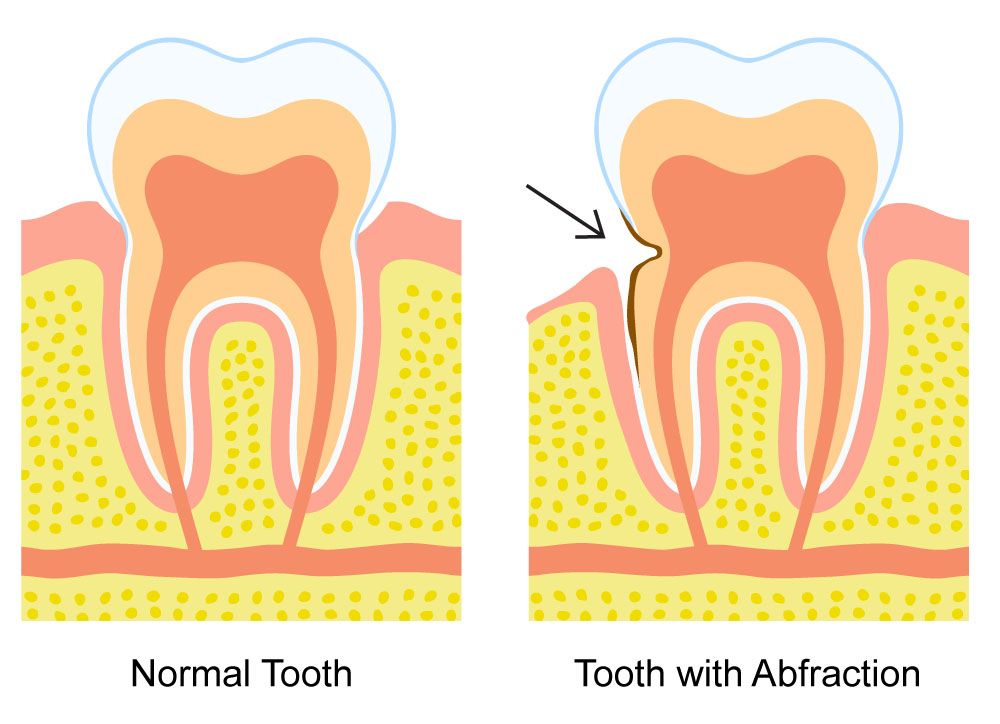Dental Abfractions: What Are They and What Treatments Are Available?
By John Rink DDS on December 13, 2016
 We all know what tooth decay is, at least in general terms. Many people also have a good understanding of chips and cracks on teeth. Yet how many people out there understand dental abfractions? It's not a term that's in the mainstream, but it's something we see a fair amount at our Charleston restorative dentistry practice.
We all know what tooth decay is, at least in general terms. Many people also have a good understanding of chips and cracks on teeth. Yet how many people out there understand dental abfractions? It's not a term that's in the mainstream, but it's something we see a fair amount at our Charleston restorative dentistry practice.
We'd like to take this opportunity to define what dental abfractions are and then consider how they can be properly treated.
What Are Dental Abfractions?
Dental abfractions refer to lesions that form on the teeth over time, typically where the tooth meets the gumline. They may take the form of angular notches or smoothed down notches. They're common in many people, taking many years to form.
What Causes Dental Abfractions?
There is actually some debate about this.
Some people feel that dental abfractions form as a result of tension and pressure exerted on the teeth. This is the a consequence of natural wear and tear from eating foods as well as conditions such as teeth grinding (bruxism). Over time, the stress on the teeth winds up wearing down the enamel. Brushing and flossing can exacerbate the lesions, rounding them or smoothing them out.
Others believe that mechanical stress exerted on the teeth causes dental abfraction. In other words, it's the act of brushing and flossing our teeth that's the primary cause of abfraction. Biting, chewing, and bruxism is then a secondary factor.
There is some connection between both of these causes, and perhaps the exact nature of abfraction will be up for less debate in the future. As more answers come about regarding this curious issue, we'll be sure to share these findings on the blog.
The Dangers of Dental Abfractions
The primary danger of dental abfraction is the weakening of the tooth structure. This means that teeth are more susceptible to chipping, cracking, fractures, erosion, and tooth decay. It's possible that serious abfraction can lead to tooth sensitivity given the thinning of the enamel along the gumline. The risk of root canal infection increases given these circumstances. There are also aesthetic concerns if the abfractions are particularly large.
Because of this, it's important that abfractions be dealt with as soon as possible.
Common Treatments for Dental Abfractions
The most common treatments for dental abfractions tend to involve dental bonding or the use of a tooth-colored filling. This helps rebuild the minute amount of tooth structure that has been harmed, strengthening the tooth and preventing more serious health issues down the road.
Since the bonding and filling material is matched to the shade of a patient's tooth, the restoration work will not be noticeable, even when someone is up close to you.
The Importance of Regular Dental Visits
The steady development of dental abfractions is one of many reasons why you cannot take regular dental visits for granted. By meeting with your dentist twice a year, dental abfractions can be caught and treated sooner rather than later. This means optimal preventative care and a healthy, beautiful smile for years to come.
Learn More About Your Dental Care Options
For more information about dental abfraction and you many treatment options available for other kinds of dental health issues, be sure to contact our team of dental health experts today. We all look forward to seeing you in person and providing you with the answers you need.

